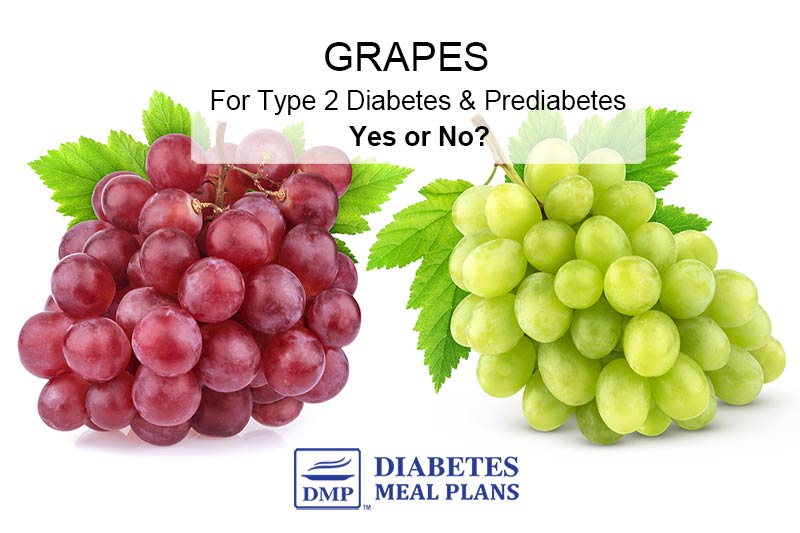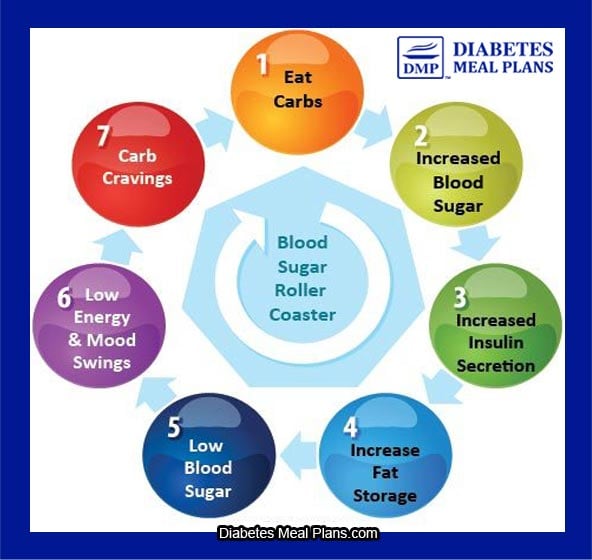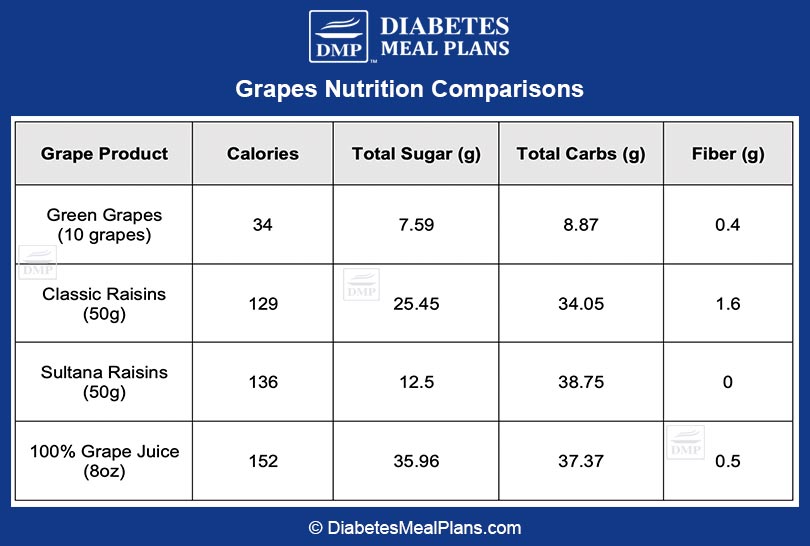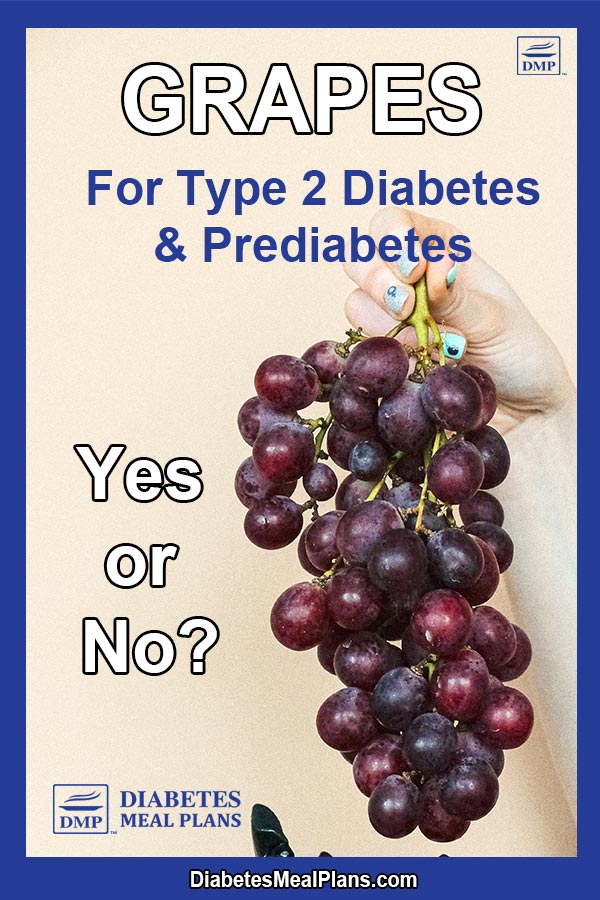Fruit. We all think it should be included in any healthy diet because it provides countless health benefits. That’s a myth.
Whole fruit certainly beats ‘added sugar’ as a sweet. But your concern with diabetes is blood sugar spikes and achieving better blood sugar control.
A fresh clump of grapes ay look beautiful on the vine, but, when it comes to blood sugar levels, grapes can be a disaster for people with type 2 diabetes.
There are plenty of delicious high-fiber fruits that we do recommend you include in your meal plan, but grapes are not one of them. Why? It all comes down to sugar…
Read more to learn how sugar (even natural sugar) can affect glucose levels, insulin, fat storage, and your overall health.

What are Grapes?
Grapes are small fruits that grow in clusters and are native to parts of Europe. They are often eaten on their own and they are also commonly turned into products like wine, jam, oil, and raisins.
They come in a variety of colors ranging from dusty pink to deep crimson and even black, but red and green grapes are the most common varieties.
Grapes can be a sweet treat and they are generally considered to be a healthy snack, but are they a smart choice for people with diabetes and prediabetes?
Let’s see what the nutrition facts have to say…
Nutrition Facts for Grapes
One serving of 10 red or green seedless grapes includes:
- Carbohydrates: 8.87 g
- Total sugars: 7.59 g
- Fiber: 0.4 g
- Fats: 0.08 g
- Protein: 0.35 g
- Calories: 34
If you were focused on limiting your calories then grapes might seem like a good option because the calories aren’t terribly high.
As a person with type 2 diabetes or prediabetes, however, you should be less concerned about counting calories and more concerned by the amount of carbohydrate you’re consuming!
A small bunch of just 10 grapes packs almost 9 grams of carbohydrates. But as you can see by the sugar content, most of the carbs is pure fruit sugar (7.59 grams of sugar!), with practically no protein, fat, or fiber to balance out all those quick sugars.
Super sweet fruits tend to leave you wanting more, so it’s very easy to go overboard and wrack up 20-30g of straight sugar by just eating a little more than you intended to.
Grapes are a perfect example of a simple carb (the kind of carbs that are best kept limited). Simple quickly absorb across the small intestine and into your bloodstream, leading to rapid rises.
Whereas complex carbohydrates such as non starchy vegetables provide plenty of fiber to balance out any natural sugars they contain.
Sudden spikes in blood sugar also lead to larger spikes in insulin, which contribute to extra fat storage in the body. Not to mention, this blood sugar roller coaster can also leave you feeling depleted of energy, increase appetite and lead to craving even more quick sugars just a few hours later.

Comparing Grape Products
You may also be wondering about the dried fruit. Take a moment to check out this chart that compares the nutritional differences between several different grapes and grape-based products.

What do these grape products have in common?
Yep, you guessed it – they’re all packed with sugar!
Natural sugar or not, sugar is still sugar and there’s only one place it ends up – in your bloodstream.
When you compare the fresh red and green grapes to the raisins and the grape juice, the fresh grapes have the lowest amount sugar and carbs.
The grape juice is clearly the worst offender in terms of total sugars, which shouldn’t come as a surprise. Fruit juice is notoriously high in sugar and low in nutrients—avoid it at all costs!

Busting the Fruit Myth
There is an age old myth claiming that fruit is a major health food, and that just isn’t always the case.
Fruit definitely has its upsides, and an apple is always a healthier choice than a chocolate doughnut, but what is healthy for someone with a fully functioning metabolism might not be the right food for a person with type 2 diabetes.
The truth is that you need to be a little pickier with your fruit choices when you’re a diabetic. You can’t just say “all fruit is good for you” and dive into a big pile of bananas and mangos, hoping that the sugar won’t affect you.
A lot of fruits are simply packed with sugar. Yes, it is natural sugar, but your body still receives it as a big sugar bomb that will send your blood glucose soaring.
Grapes do contain healthy phytonutrients like resveratrol and beta-carotene as well as several vitamins that are necessary for overall health, but the good news is that grapes are not the only food that contains these nutrients.
Red and green grapes contain vitamins K, A, and C, but you also can find these vitamins in low carb produce like spinach, leafy greens, broccoli, and citrus fruits.
Lettuce, tomatoes, and carrots are rich sources of beta-carotene and resveratrol is abundant in peanuts, pistachios, blueberries, and cranberries.
Swapping out grapes for any of these options will give you the same vital nutrients without costing you all those carbs!
Conclusion: Are Grapes Bad For Diabetics?
Grapes are not the best fruit choice for diabetics as they are high in carbohydrates and sugar and low in fiber.
If you do want to eat grapes, be very diligent with portion control. Stick to about 10 grapes only, which is about 9g carbs.
Fresh fruit can make a great addition to your diabetes diet. But you must choose wisely. Check out our info on the best fruits over here.

Leave a Reply